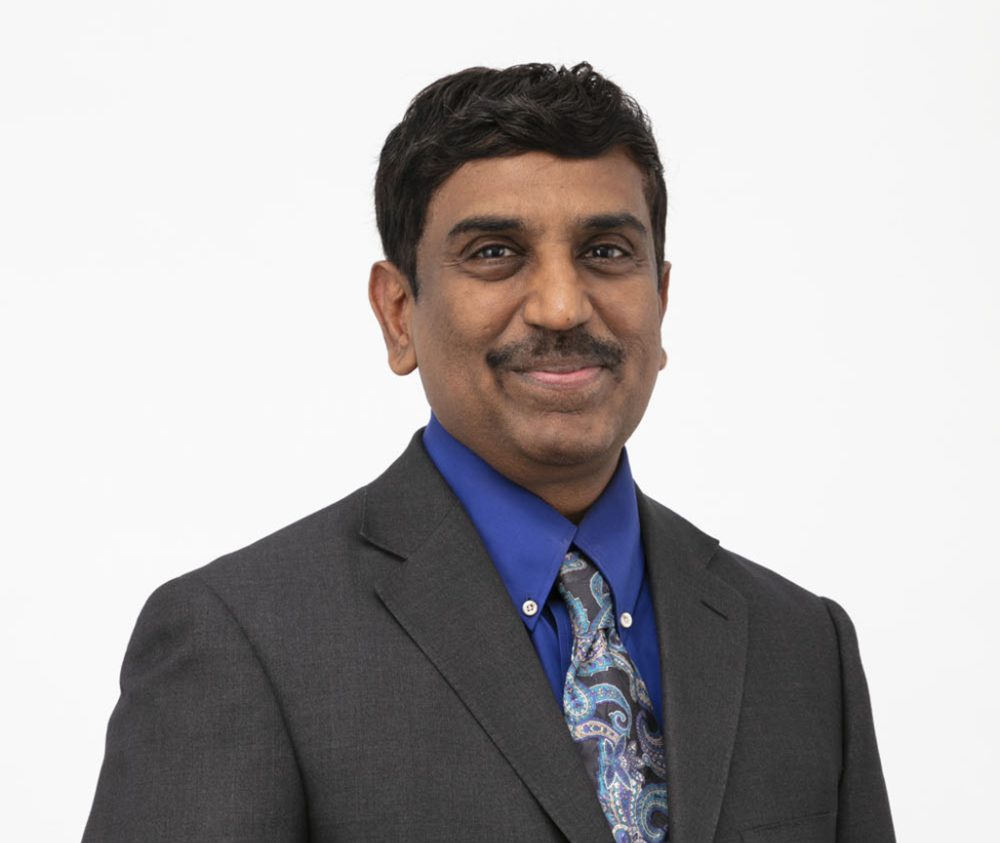Two weeks ago, our usual suspects from Fraunhofer HHI’s Wireless Communications and Networks Department gave a virtual presentation of their paper referenced in their robot dog gesture recognition demo video (from which we know they had utilised Akida) at yet another conference, the International Conference on Neuromorphic Systems (ICONS), hosted by George Mason University in Arlington, VA:
View attachment 68146
In their
YouTube video, Zoran Utkovski describes their demo as “a proof-of-concept implementation of neuromorphic wireless cognition with an application to
remote robotic control”, and recent conference presentations were titled “Gesture Recognition for
Multi-Robot Control, using Neuromorphic Wireless Cognition and
Sidelink Communication” resp. “Neuromorphic Wireless Cognition for
Connected Intelligence”.
The words I marked in bold piqued my interest to dive a little deeper, in exploration of the question who would benefit from such research, as I don’t believe in what others here and especially elsewhere (FF) have strongly suggested: that Spot’s manufacturer Boston Dynamics and/or South Korea’s Hyundai Motor Group (which acquired BD in June 2021), is/are the secret customer(s) behind this PoC, allegedly paying Fraunhofer HHI researchers a fee to experiment with Akida on their behalf, as they must be keen on giving their four-legged mobile robot a neuromorphic “upgrade”.
The question you should ask yourselves is: Why would they outsource this type of research, when their own AI experts could easily play around with Akida at their own premises (unless they were buried in work they deemed more important)? Two years ago, the Hyundai Motor Group launched the Boston Dynamics AI Institute, headquartered in Cambridge, MA, to spearhead advancements in artificial intelligence and robotics. In early 2024, another office was opened in Zurich, Switzerland, led by Marco Hutter, who is also Associate Professor for Robotic Systems at ETH Zürich. Why - with all their AI and robotics expertise - would they need Fraunhofer HHI to assist them? Fraunhofer’s contract research is typically commissioned by small- and medium-sized companies that do not have their own R&D departments.
I suggest we let the facts speak for themselves:
The YouTube video’s description box basically says it all:
“(…) The followed approach allows for reduction in communication overhead, implementation complexity and energy consumption,
making it amenable for various edge intelligence applications. The work has been conducted within the 6G Research and Innovation Cluster (6G-RIC), funded by the German Ministry of Education and Research (BMBF) in the program “Souverän. Digital. Vernetzt.” Find more information here: https://6G-ric.de”
View attachment 68164
And here is a link to a download of a publication detailing the above-mentioned program “Souverän. Digital. Vernetzt.” (German only):
Mit dem Forschungsprogramm schafft das BMBF die Grundlage dafür, dass Deutschland und Europa bei der Entwicklung von Technologien für moderne und zukünftige Kommunikationssysteme eine führende Rolle einnehmen und souverän die fortschreitende Digitalisierung vorantreiben werden.

www.bmbf.de
View attachment 68163
So this
publicly-funded PoC developed by five researchers from Fraunhofer HHI (the institution coordinating the 6G-RIC research hub) and Osvaldo Simeone from King’s College London is evidently about exploring future use cases that 6G will enable - cutting-edge research aiming “to help establish Germany and Europe as global leaders in the expansion of sustainable 6G technologies”. It is clearly not contract research commissioned by Boston Dynamics or Hyundai, with the intention of upgrading a product of theirs.
The 6G-RIC hub does have a number of illustrious industry partners, by the way, but neither BD nor Hyundai are one of them:
View attachment 68165
Still not convinced? Another hard-to-ignore piece of evidence that refutes the narrative of Boston Dynamics / Hyundai paying Fraunhofer HHI researchers to experiment with Akida and come up with that PoC is the following document that I stumbled across in my online search. It proves that on May 4, 2023 the Fraunhofer Central Purchasing Department in Munich signed a contract to buy a total of three Spot robot dogs directly from Boston Dynamics - the company that had won the public tender - and that they were destined for 6G-RIC project partner Fraunhofer HHI in Berlin.
Öffentliche Ausschreibung im München. 3 Stück Spot Roboterhunde 2 Stück Spot Arm 1 Stück Spot CAM+ IR (Front) 3 Stück Spot Docking Station 3 Stück Spot GXP 2 Stück Spot EAP 2 1 Stück Spot Battery Boston Dynamics Spot 6G-RIC Bekanntmachung vergebener Aufträge

ausschreibungen-deutschland.de
View attachment 68147
View attachment 68148
We can safely assume that Boston Dynamics - had they really been a paying customer of Heinrich Hertz Institute (HHI) - would have supplied the Fraunhofer Institute with their own products free of charge in order for the Berlin telecommunication experts to conduct research on their behalf.
All available evidence points to Spot simply being a popular quadruped robot model the researchers selected for their testbed realisation and demo.
But back to my sleuthing efforts to find out more about what the researchers at Fraunhofer HHI might be up to:
I chanced upon an intriguing German-language podcast (Feb 1, 2024) titled “6G und die Arbeit des 6G-RIC” (“6G and the work of the 6G-RIC”) with Slawomir Stanczak as guest, who is Professor for Network Information Theory at TU Berlin, Head of Fraunhofer HHI’s Wireless Communications and Networks Department as well as Coordinator of the 6G Research and Innovation Cluster (6G-RIC):
https://www.ip-insider.de/der-nutze...ellschaft-a-cf561755cde0be7b2496c94704668417/
The podcast host starts out by introducing his guest and asking him why we will require 6G in the future (first 6G networks are predicted by 2028-2030).
Slawomir Stanczak names mixed reality as a prime use case, as it is combining massive data rates with the need for ultra-low latency, and then - about six minutes into the podcast - for the first time touches upon the topic of collaborative robots that work together towards a common goal, for example in areas such as Industry 4.0 and healthcare. According to him, 5G will be insufficient once many robots are to collaborate on a joint task, especially since an additional functionality will be required: sensing.
[Note that Slawomir Stanczak uses “collaborative robots” here in the sense of two or more robots collaborating with each other, whereas normally the term “collaborative robots” (aka “cobots”) simply means robots that are designed to work along humans in a common workspace as opposed to industrial robots that replace employees, usually for mundane and repetitive tasks that require speed and precision. As industrial robots tend to be in a fixed position and quite large and powerful, they are often caged or fenced-off so as not to endanger any humans who come too close.]
Slawomir Stanczak then briefly talks about autonomous cars and goes on to say that processing autonomously at the edge is not always the most effective solution. He gives the example of two cars trying to find a free lot in a multi-storey car park - in this particular case, a centrally coordinated decision, which is then communicated to the individual cars, would be the most efficient way of solving the problem. Hence, sometimes a centrally coordinated connected network that is able to combine data beats fully autonomous decisions and also helps to anticipate problems in order to pro-actively prevent them from happening. However, in other cases, when low latency is of utmost importance, decentralised decisions (= at the edge) are essential. Ultimately, it is all about finding the optimal compromise (“functional placement” in the mobile network).
From 17:12 min onwards, the podcast host picks up the topic of connected robotics and mentions a collaboration with Charité Universitätsmedizin Berlin, which is Germany’s biggest (and very renowned) university hospital, regarding the development of nursing robots and their control via 6G.
Stanczak confirms this and shares with his listeners they are in talks with Charité doctors in order to simplify certain in-hospital-processes and especially to reduce the workload on staff. Two new technological 6G features are currently being discussed: 1. collaborative robots and 2. integrated communication and sensing (ICAS).
Stanczak and his colleagues were told that apart from the global nursing shortage we are already facing, it is also predicted that we will suffer a shortage of medical doctors in the years to come, so the researchers were wondering whether robots could possibly compensate for this loss.
The idea is to connect numerous nursing robots in order to coordinate them and also for them to communicate with each other and cooperate efficiently on certain tasks - e.g., comparatively simple ones such as transporting patients to the operating theatre or serving them something to drink [of a non-alcoholic nature, I presume

]. But the researchers even envision complex tasks such as several robots collaborating on turning patients in bed.
Telemedicine will also become more important in the future, such as surgeons operating remotely with the help of an operating robot [you may have heard about the da Vinci Surgical System manufactured by Intuitive Surgical], while being in a totally different location.
[Something Stanczak didn’t specifically mention, but came to my mind when thinking of robot-control via gesture recognition in a hospital setting, is the fact that it would be contactless and thus perfect in an operating theatre, where sterile conditions must be maintained.]
As for the topic of sensing, the researchers’ vision is to one day use the hospital’s existing communication infrastructure for (radar) sensing tasks as well, such as detection whether a patient is in the room or has left it, monitoring of vital signs such as breathing - camera-less, and hence maintaining privacy.
[I remember reading somewhere else that with ICAS the network itself basically acts as a radar sensor, so there would be no need for additional physical radar sensors - please correct me, if I am wrong, as my grasp of all things technical is extremely superficial.]
Stanczak also views the analysis of liquids as a use case with great potential.
[I assume he was thinking of analysing blood, urine, cerebrospinal fluid etc., but possibly this would also include nasal or oral fluid samples collected for testing of infectious diseases such as COVID-19 or the flu.]
The podcast then moves on to the topic of energy efficiency (6G vs 5G), and Stanczak draws attention to an interesting point, namely that it is not sufficient to merely focus on improving the energy efficiency of mobile networks, as we also need to take into account the so-called rebound effect, which describes the reduction in expected gains from new technologies, as improvement in energy efficiency will lead to an overall increase in energy consumption.
[So, paradoxical as it sounds, saving energy can in fact lead to spending more.]
This is why according to Stanczak we will need a paradigm shift in the years to come and change scaling laws: improving the mobile networks’ energy efficiency while simultaneously decreasing our energy consumption. In addition, R&D in the field of renewable energies continues to be essential.
The remaining 8 or so minutes of the podcast were about frequency bands within the 6G spectrum and surfaces that can channel radio waves - far too technical for me to understand.
After listening to the podcast, I searched the internet for some more information on the cooperation between the institutions involved and discovered two major projects that link Fraunhofer HHI and Charité Universitätsmedizin Berlin (which by the way is the joint medical faculty of FU Berlin and Humboldt-Uni Berlin, both consortium members of 6G-RIC, led by Fraunhofer HHI)
- TEF-Health (Testing and Experimentation Facility for Health AI and Robotics)
https://www.hhi.fraunhofer.de/en/ne...ucture-for-ai-and-robotics-in-healthcare.html
View attachment 68149
View attachment 68151
- 6G-Health (2023-2025), jointly led by Vodafone Germany and ICCAS (Innovation Center Computer Assisted Surgery) at Uni Leipzig’s Faculty of Medicine
https://www.hhi.fraunhofer.de/en/ne...off-better-healthcare-with-6g-networking.html
“
The 6G Health project complements the work of Fraunhofer HHI researchers in the BMBF-funded Research Hub 6G-RIC (…) They use the close collaboration in the 6G Health Consortium to coordinate requirements for the mobile communications standard and its future application in the medical field with clinical partners. This enables the experts to identify potential 6G applications at an early stage and lay the foundations for them in 6G standardization.”
View attachment 68150
All this ties in nicely with Fraunhofer HHI’s job listing I had spotted in November, “looking for several student assistants to support
research projects on neuromorphic signal processing in the area of (medical) sensory applications”, during which they would “support the implementation of algorithms
on neuromorphic hardware such as SpiNNaker and Akida.”
So to wrap it all up from my point of view:
We do know from the demo video that Fraunhofer HHI researchers used an Akida Raspberry Pi as part of their PoC, which encouragingly won a “Best Demonstration Award” at the ICMLCN 2024 Conference in Stockholm.
The results of my deep dive suggest to me that this PoC has to do with trying to establish a connected network of robots controlled via 6G, presumably for future 6G-enabled applications in healthcare.
It is likely our company’s role in the development of this PoC was limited to being a seller of a disruptive commercial product, not aware of what it was going to be used for. And of course there is no guarantee that this PoC utilising Akida will ever be commercialised and that Fraunhofer HHI researchers won’t be making a decision to go with a competitor’s neuromorphic hardware for future applications.
Undoubtedly, though, Fraunhofer HHI is one of the entities researching (and evidently liking) Akida. Hopefully this will eventually lead to more, with all those industry partners onboard. But I am afraid I don’t see any immediate commercial engagements resulting in revenue here. Happy to be proven wrong though…
 View attachment 68152
View attachment 68152





